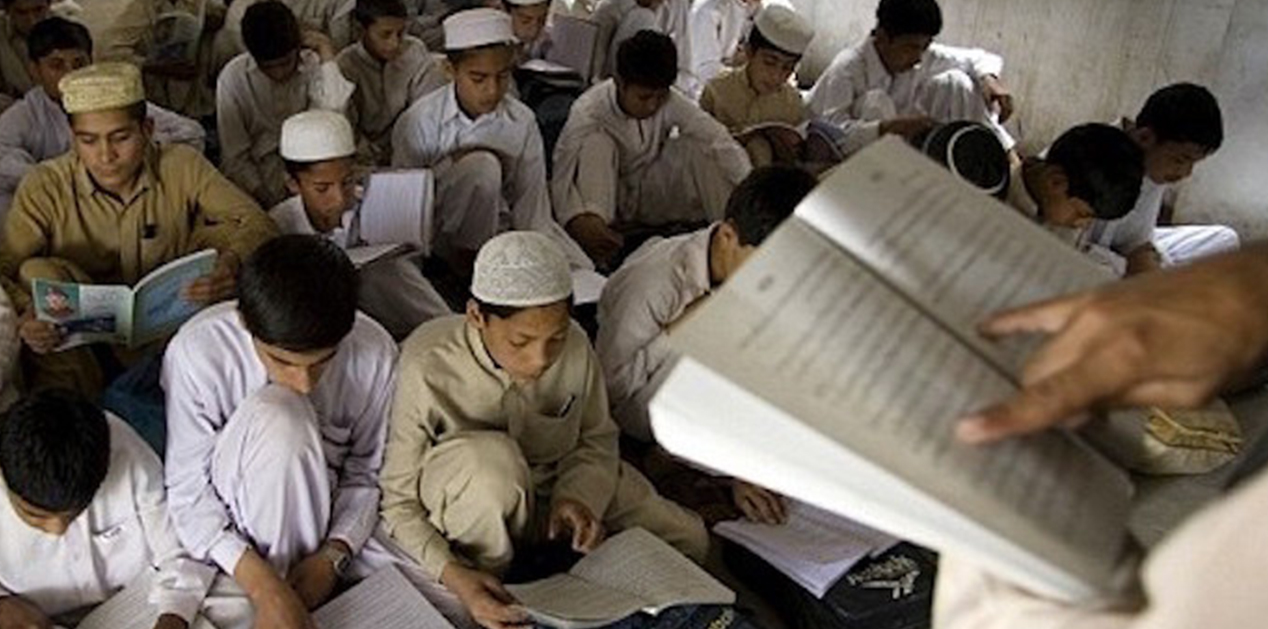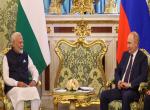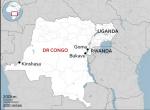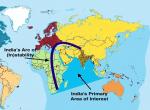With the spate of violent protests in Kashmir and Pakistan’s diabolical attempts to vilify India on the false grounds of human rights violations, once again the age-old and perennially relevant question in the strategic world has come up:“How should we deal Pakistan?” Time and again it has been felt that India has lacked a systematic and long-term Pakistan policy in the entire history of last 60 years. Our policy has at the most been reactionary, spontaneous, and short-term, and based on miscalculations. This can be attributed to many factors like absence of communication between the military brass and bureaucratic/diplomatic cabal or rather the malicious smugness of the latter vis-à-vis the former. Other factors include things like a lack of a nationalist and realistic perspective in strategic thinking among India’s policy making and intellectual circles. A sort of moralistic and idealistic approach which draws its inspiration from Nehru’s idealistic vision has marked India’s strategic culture, much to her disadvantage which
has become irreversible over time.
In this essay, I am going to deconstruct one such idealistic approach which advocates diplomatic engagement with Pakistan with sustained dialogue at the political level and its track 2, 3 or 4 variants. This has been the favored rhetoric of people across the spectrum from die-hard liberals to the so-called “realistic” policy wonks of India. The problem with this kind of approach is that it comes without sufficient understanding of the Pakistani psyche, her true intentions, and Pakistan’s existential limitations. An exploration of these issues will require some reflection upon the nation’s origin and socio-political evolution over the last 70 years.
The most pertinent question which comes up while addressing the issue of strategic dialogue with Pakistan is that:“Whom should India talk to ?” In Pakistan, there are multiple actors calling the shots. Most importantly and most powerfully, it’s army which runs the state. In army also, it is ISI, better known as “deep state” in the strategic world, which is the real player and controls the state apparatus. Then there are fledgling and weak democratic leaders like Nawaz Sharif, Zardari and Imran Khan. There are non-state actors like Lashkar-e-Toiba, JuD, Tahreek-e-Taliban and an array of religious parties existing in the gray zone of an extremist group, a terrorist organization, charity group or a political group. These groups have been raised and bred over decades by the military to suit its political and strategic interests. Now they play a very strong role in the social, cultural, political and the formal state apparatus of Pakistan, and the worrying concern is that many of these non-state actors have gone beyond the control of army and have become potent players in the global Islamic movement with their superb transnational networks, ready supply of recruits and funds, and strong expertise in the tradecraft of insurgency and terrorism. Finally, there are international players like Saudi Arabia, China, and the US who are exercising tremendous political and economic influence in Pakistan.
Among all the aforementioned players, the army along with the ISI can be accepted as the most important player for all practical purposes. It can be argued that if at all India wants to engage any institution in Pakistan in a diplomatic dialogue for some concrete action and result, then it has to be with the army. However, the question arises is that whether the army is genuinely interested in resolving the issues of Kashmir, terrorism, and non-state actors or not?
Eminent Pak experts like Christine Fair, Ayesha Siddiqi, Hussain Haqqani and MJ Akbar have suggested that Pakistan Army derives its sustenance through the Kashmir conflict. As long as it can sustain the perception of India as an existential threat and an ideological antithesis, it can continue getting a huge portion of state revenue, perks, land holdings, financial resources and the other forms of state largesse, besides immense political and social clout. And, for this, it is essential to keep the Kashmir issue alive. Whenever there has been any attempt by the democratic leadership to negotiate peacefully it has been met with resistance by the army unless it has been initiated by the army itself or it has active involvement of the military brass. Further, there is huge jihadi infrastructure which has been created over the last 60 years in passion for Kashmir. Now the humongous jihadi infrastructure has become uncontrollable while developing stakes in the continuation of Kashmir conflict. There is fear of loss of income and clout if the attempts at peace succeed. Hence, one always comes across organized acts of violence to derail any attempt at peaceful negotiations. Of late, it is said that the jihadi groups have gone beyond army’s control and turned into a Frankenstein, and therefore, the army cannot be blamed for their acts of terrorism. However, facts on the ground tell a different story. Though a plethora of fanatic groups like Lashkar-e-Jhangvi, Sipah-e-Sahaba, and Tahreek-e-Taliban Pakistan have thrown a major challenge to the socio-political fabric of Pakistan and engaged army in severe gun battles, but that is not the case with respect to India-specific terrorist outfits like Lashkar and Jaish. These India-specific non-state actors are still regarded as ‘strategic assets’ by the Pakistan Army and given a favorable treatment.
As regards political parties, it must be appreciated that, first of all, they don’t have enough clout. Secondly, having nurtured the perception of India being an existential threat, going ‘overboard’ with peace overtures would be a political disaster for these malnourished democratic forces. International players like US and China have their own geo-strategic calculations to keep India and Pakistan engaged in a pattern of ‘conflict-dialogue and conflict again’ without any honest intention to facilitate a mutually agreeable solution to the historically rooted disputes. Lastly, the common people of Pakistan have been fed with a distorted and hateful narrative of nationalism over the years which thrive on lies, hatred and religious extremism. Of late, an intense Wahabi and Deobandi radicalization of society has dealt a final blow to the last remnants of liberal and tolerant Islamic culture, and intensified the anti-West, anti-Kafir, anti-minorities and anti-India hatred. The aforementioned actors might clash with each other over several issues but there is a broad consensus over the perception of India as an existential threat which has to be hated and countered at every step and by all means.
Having analyzed the various stakeholders and their real intentions, I would like to delve deeper into the issue and explore the past of Pakistan for an understanding of the true reasons for its suspicious mindset, belligerence and perpetual animosity. In ‘Foreign Policy’, Nisid Hajari writes that Pakistanis always perceived Congress opposition to partition as the latter’s non-acceptance of the idea of Pakistan. Though the Indian National Congress was motivated by idealism, good faith, and secularism, but for the proponents and followers of the idea of the independent Pakistan as a fortress of Islam, that idea had a religious sanctity, and any opposition to it was bound to be a civilizational or existential threat. Indian National Congress however tried to understand the Muslim League from its own standpoint and could so never understand the sub-conscience of the Pakistan movement. M J Akbar in his classic work “Tinderbox-Past and Future of Pakistan” maintains that the genesis of the idea of Pakistan can be traced back to the fear that arose in the minds of Muslim ruling elites and intellectuals after the fall of the Mughal Empire. Eminent philosophers and intellectuals like Sir Syed Ahmad Khan and Mohammad Iqbal, even with their modern and secular educational background, could never come to terms with the idea of sharing political space, as equal partners, with the majority Hindus. In the mainstream academic and strategic discourse in Pakistan, Pakistan is primarily an Islamic entity and India is perceived as a “Hindu India”. The underlying philosophical theme of Pakistan Army also places itself against the “Hindu India”. And, when I mention these words, the intention is not to project any communal aspirations but just to state a fact of strategic notion in South Asia. It is the way Pakistani establishment thinks and nothing can be done about that. At best, one can understand and accept this fact to act accordingly.
Secondly, centrifugal forces in Pakistan have been very strong since its creation. Their project was to build a nation but apart from Islam, there was no binding factor of nationhood. Thus over the past 70 years, Islam and Kashmir have evolved as the primary instruments of cultivating nationalism. Therefore, it is an existential compulsion to sustain and feed the perception of India being and existential threat. If not a compulsion, it is definitely something in which the main stakeholders have a binding interest. Therefore, Pakistanis (to be precise, their army) might not want a full-scale war but would always be committed to sustaining something less than war, interspersed with some periodic stunts like the Kargil adventure.
While engaging Pakistan, the aforementioned limitations of Pakistan need to be factored in and our long-term policy needs to be based on the nuanced understanding of the Pakistani mindset. Unless we know the instincts and rationale driving their actions we cannot predict their strategic posture. Now the question arises as to what could be the right way to engage an adversary having such complex characteristics. Firstly, the engagement has to come out of its teleological and futuristic approach. Such an approach is purposive and begins with the unrealistic aspirations of finding lasting solutions to overhanging disputes like Kashmir and cross-border terrorism. The approach has to be mechanical, aiming in the first place to curtail the incidents of the military confrontations and terrorist attacks. With this philosophy, the engagement strategy has to span over a broad spectrum ranging from hardcore undercover pressure tactics and sabotage to formal dialogue process. Secondly, we have to weigh the different stakeholders and then decide as to whom to engage with. The engagement must follow a system of checks and balances based on strictly pragmatic grounds of our national interest and developed and implemented in both tactical and strategic manner. While engaging with the most important stakeholders in the short-run, India must strengthen those stakeholders who suit her long-run strategic interests in the region. Thirdly, international isolation through diplomatic efforts will be immensely advantageous vis-à-vis the costs incurred. Fourthly, direct communication channels between the intelligence agencies of the two countries may go a long way in averting many conflicts that arise out of charged passions. Finally, India must declare its red-lines and back-up its pronouncements with actions. A genuinely-felt fear of Indian reprisal and covert actions can be extremely helpful in preventing the state-backed non-state actors from undertaking any Mumbai-like misadventure in the future, which if happens, could be a trigger for a military action escalating into a nuclear war.
To conclude, I would state that there is a midway solution possible which can satisfy the prominent stakeholders of Pakistan by keeping the ‘India-threat’ alive and also address the uncertainty and instability arising from a fear of unintentional escalation of short military action into a full-fledged nuclear war. The pay-offs are equal as it is a zero-sum game. What we need is just the right understanding of the Pakistani instincts, aspirations and limitations, and a realistic flavor in our approach. If we understand them correctly, we can compel them to act more rationally and finish the incentives to indulge in misadventures.
It is typically characteristic of Indian posture and narrative to take a moral high-ground vis-à-vis Pakistan’s non-secular existence as if we are still trying to undo the history. The partition has occurred and it is a historical fact which can neither be undone nor used to proclaim a high moral ground by virtue of India’s existence a successful and multicultural democracy for the last 70 years. We may note that secularism and democracy are not the most sought after objectives for such societies and their political systems which are driven by religious extremism.
(The author is a public relations, economics and policy consultant. He is also a free-lance journalist)
Published Date: 12th September 2016, Image Source: https://www.jihadwatch.org
(Disclaimer: The views and opinions expressed in this article are those of the author and do not necessarily reflect the official policy or position of the Vivekananda International Foundation)











Post new comment